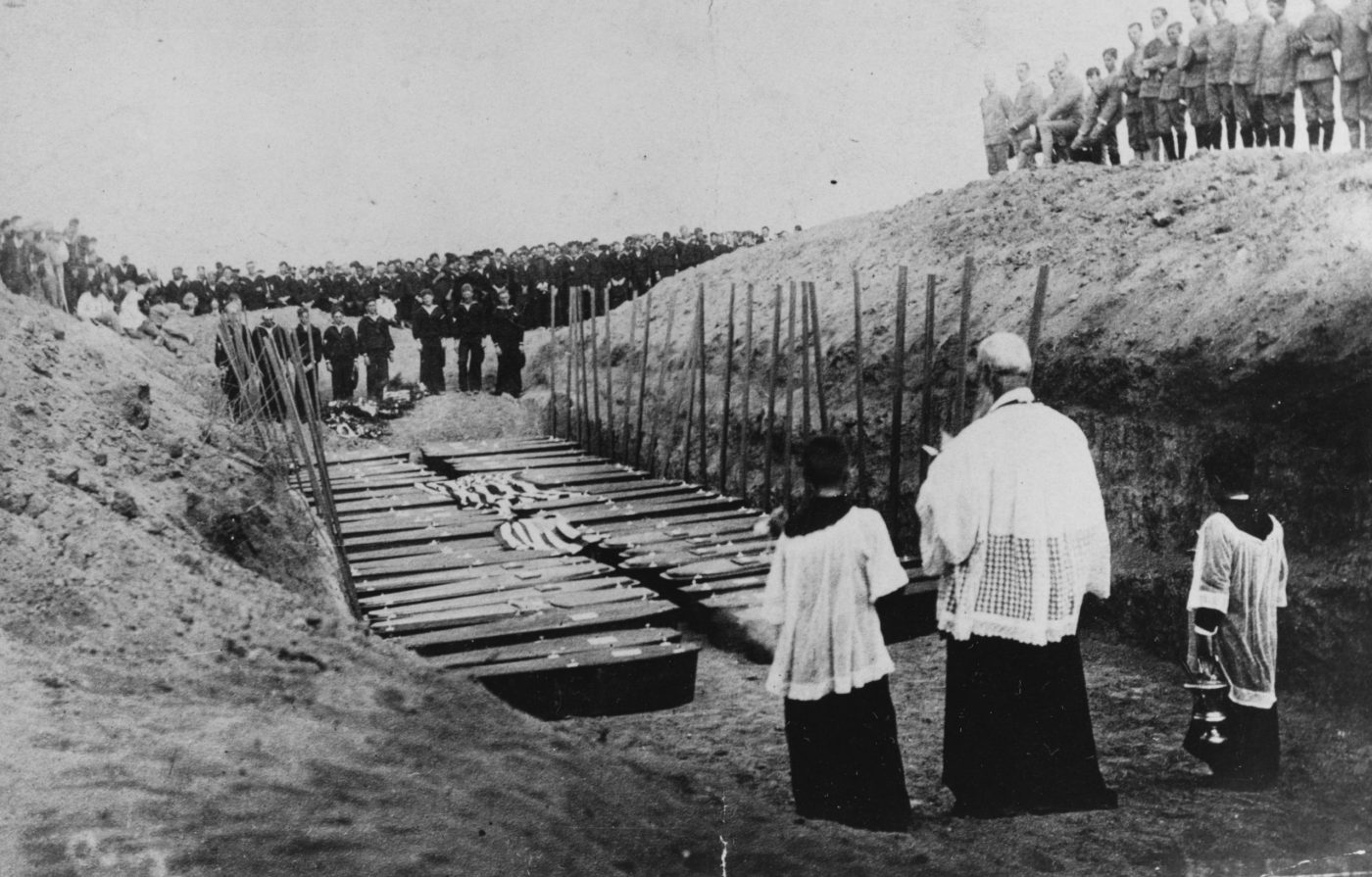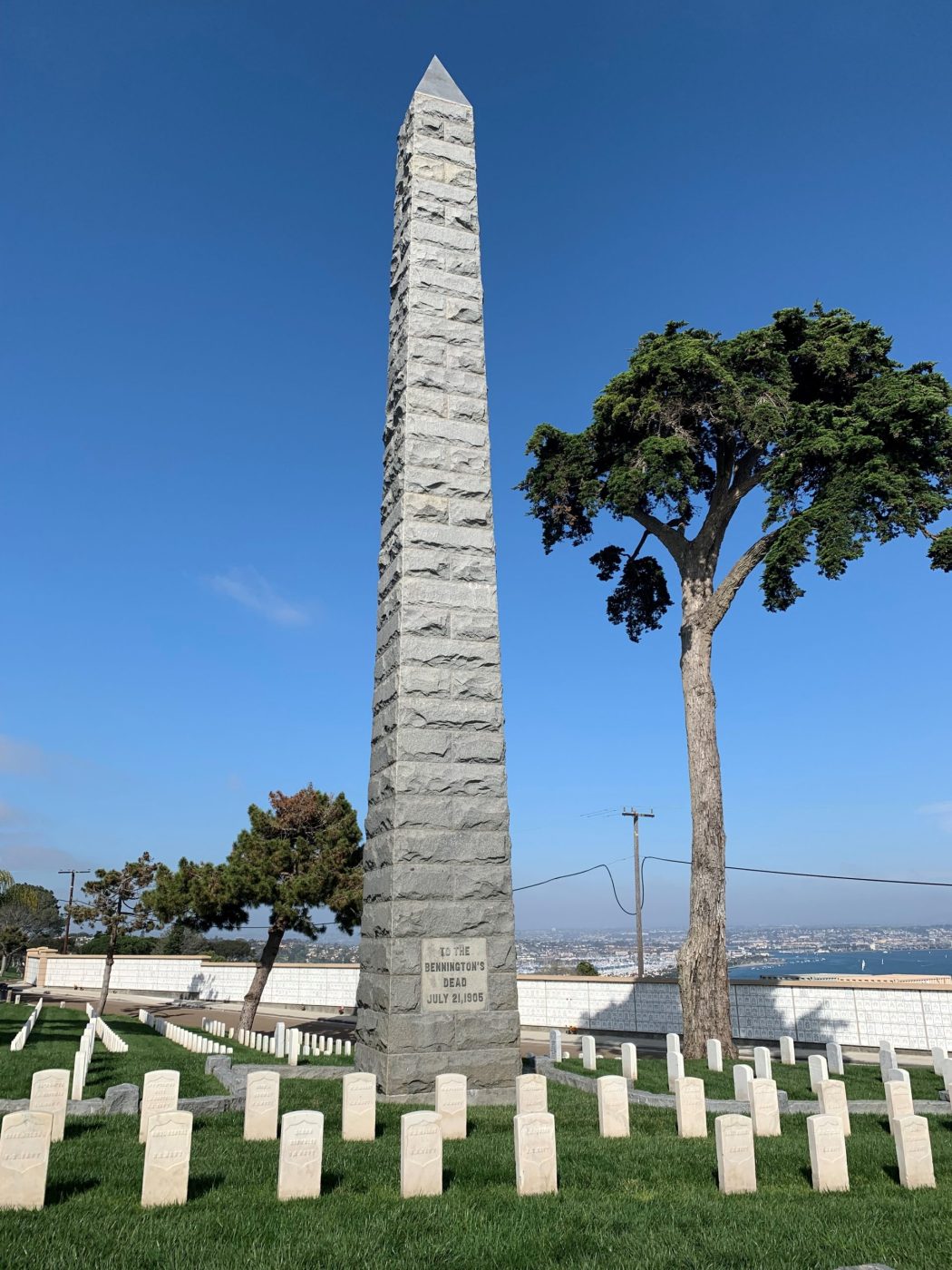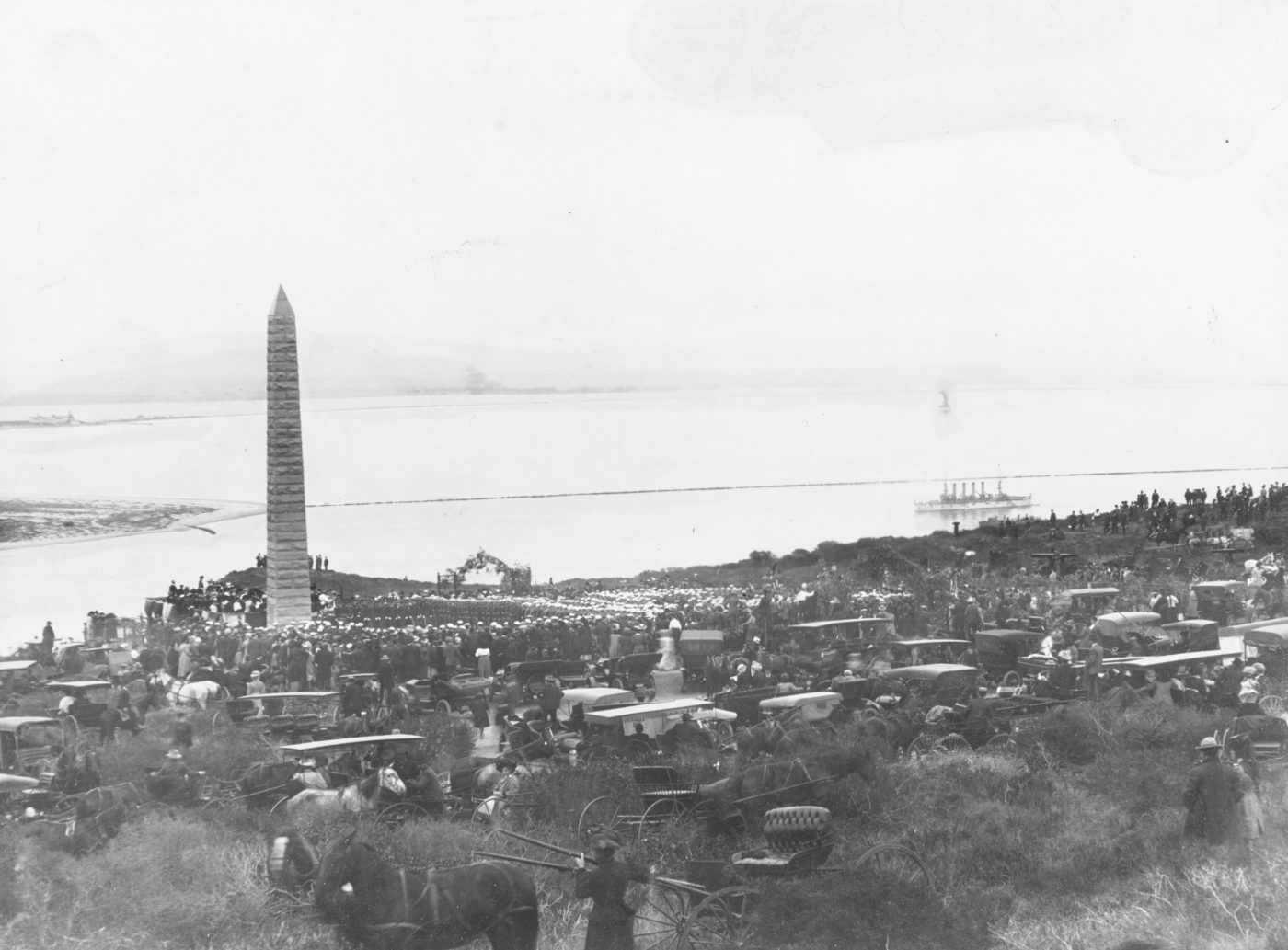
A somber procession of eight horse-drawn dray wagons left the central plaza of downtown San Diego at precisely noon on July 23, 1905. Typically loaded with heavy trade goods, these drays collectively carried 49 pine coffins holding the remains of sailors killed two days prior in the boiler explosion of the steel-hulled gunboat USS Bennington. On each wagon, the wreath-adorned coffins were stacked three high and draped with an American flag. The grim, half-mile-long procession travelled without pomp or ceremony, per the Bennington commander’s request, on a jostling ten-mile dirt road leading around San Diego Bay and upward to the Fort Rosecrans post cemetery overlooking the city from the eastern bank of Point Loma. As the cortege slowly moved up the steep road, shrouded in thick dust, it gained hundreds of followers.
After hours of hard going, the wagons reached their destination. Fifty-two of the surviving Bennington crew, ferried across the bay on boats, awaited their fallen shipmates. Each wagon was unloaded by Bennington sailors and the coffins placed head-to-head in a long parallel row within a large, freshly dug trench. As the coffins were placed and inspected, it was determined that two had been claimed by families for shipment home and had to be sent back to the city morgues. The exhausted onlookers, not permitted into the cemetery, watched from afar along the cemetery’s whitewashed fence. Once the 47 coffins were in place, Episcopalian and Catholic burial rites were performed over them. The Bennington’s captain, Commander Lucien Young, then stepped out from the crowd to the lip of the trench and entrusted the remains of his crew to the fort’s commander with the hope that:
their graves never be forgotten by the hand of affection. May there rise above this, their last resting place, marble slabs to mark the place as sacred to the nation’s care, and may the morning sun ever kiss the green sod above their dust, emblematic of our love and affection.
Then, Taps played, three rifle volleys resounded, flowers were placed upon the coffins, and events concluded by 4:30 p.m.
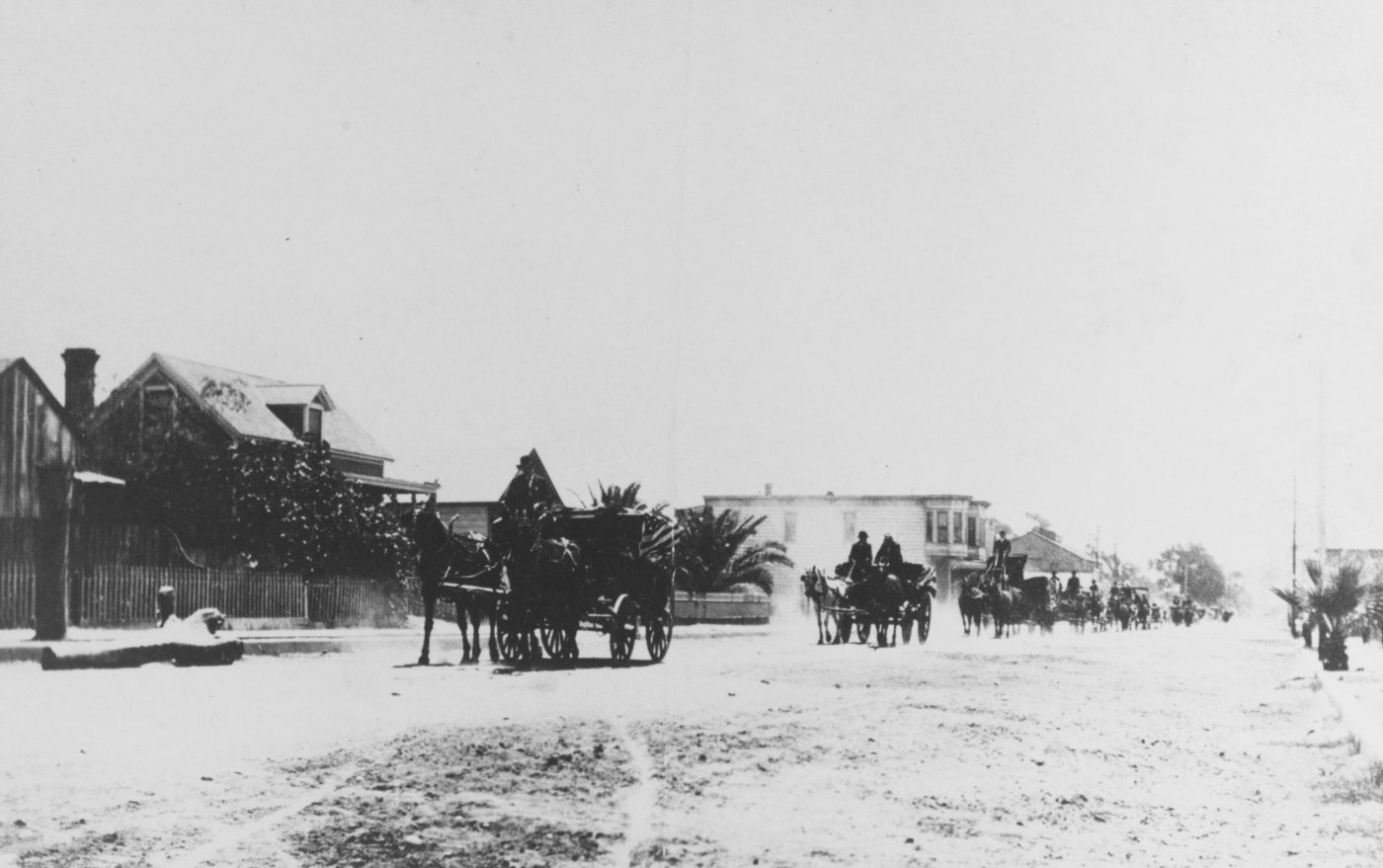
The Bennington explosion, heroic exploits of the crew, and the subsequent Navy investigation captured national attention. It was among the deadliest peacetime accidents in U.S. Navy history and claimed more lives than the Navy had lost in the nation’s most recent conflict, the Spanish-American War. Planning for a monument began immediately after the accident; in fact, the idea for a monument was born as naval officers returned across the bay aboard their launches following the funeral. Because Bennington belonged to the Navy’s Pacific Squadron, its leaders took the initiative and formed an association with the hope that each sailor in the squadron would donate up to $5 for a monument.
Concurrently, a separate Bennington Memorial Association was formed primarily by members of the San Diego community. This public group envisioned memorializing the lost crew with a recreational center for sailors in the city center, but sufficient funds never materialized. Some of the money they raised for a Bennington monument was offered to the Navy’s own efforts, but these funds were declined. In the words of Admiral Caspar Goodrich, Pacific Squadron commander, “it was our own tribute to our own comrades, we held it with a jealousy which can only be understood by those who have, themselves been called upon to make the greater sacrifice.”
The Pacific Squadron quickly raised the $5,500 needed for a monument. The design chosen was a simple obelisk made of roughhewn San Diego granite and capped with a polished granite pyramid. It was intended to make “no pretense to elaboration or . . . ornamentation for it merely commemorates the heroism of simple men whose sole guiding motive was devotion to duty.” Two polished panels were inscribed on the front and back of the monument. The north front face reads: “Erected by the Officers and Men of the Pacific Squadron in memory of those who lost their life in the performance of duty.” The other side states: “To the Bennington’s dead July 21, 1905.” The monument was placed at the plot of the Bennington dead in the Fort Rosecrans post cemetery. The section contained only 35 graves by the monument’s January 7, 1908, dedication because the families of 12 other sailors had requested the return of their remains after the initial burial. The public Bennington Memorial Association funded a matching granite coping to enclose the burial plot. An estimated 2,500 attendees turned up for the monument’s dedication.
In 1934, the once remote Fort Rosecrans post cemetery was designated a national cemetery. Over the next 30 years, it increased in size from 8 to 70 acres to accommodate the growing demand for Veteran burial spaces spurred by the two world wars. The tall Bennington monument is still one of the most recognizable features of the cemetery, although tree growth makes it almost invisible from the military hub of Coronado below. Between April and November 2010, both the monument and burial enclosure underwent substantive repair and preservation.
One officer and 65 sailors, one-third of the ship’s company, lost their lives in the explosion. Eleven crew members received the Medal of Honor for their efforts in the aftermath of the explosion. Four of those men are buried in national cemeteries, including Boatswain’s Mate William Cronan, who rose to the rank of Lieutenant Commander and was laid to rest at Fort Rosecrans in 1959.
By Richard Hulver, Ph.D.
Historian, National Cemetery Administration
Share this story
Related Stories

History of VA in 100 Objects
Object 80: LUKE/DEKA Prosthetic Arm
In the 19th century, the federal government left the manufacture and distribution of prosthetic limbs for disabled Veterans to private enterprise. The experience of fighting two world wars in the first half of the 20th century led to a reversal in this policy.
In the interwar era, first the Veterans Bureau and then the Veterans Administration assumed responsibility for providing replacement limbs and medical care to Veterans.
In recent decades, another federal agency, the Defense Advanced Research Project Agency (DARPA), has joined VA as a supporter of cutting-edge research into artificial limb technology. DARPA’s efforts were spurred by the spike in traumatic injuries resulting from the emergence of improvised explosive devices as the insurgent’s weapon of choice in Iraq in 2003-04.
Out of that effort came the LUKE/DEKA prosthetic limb, named after the main character from "Star Wars."
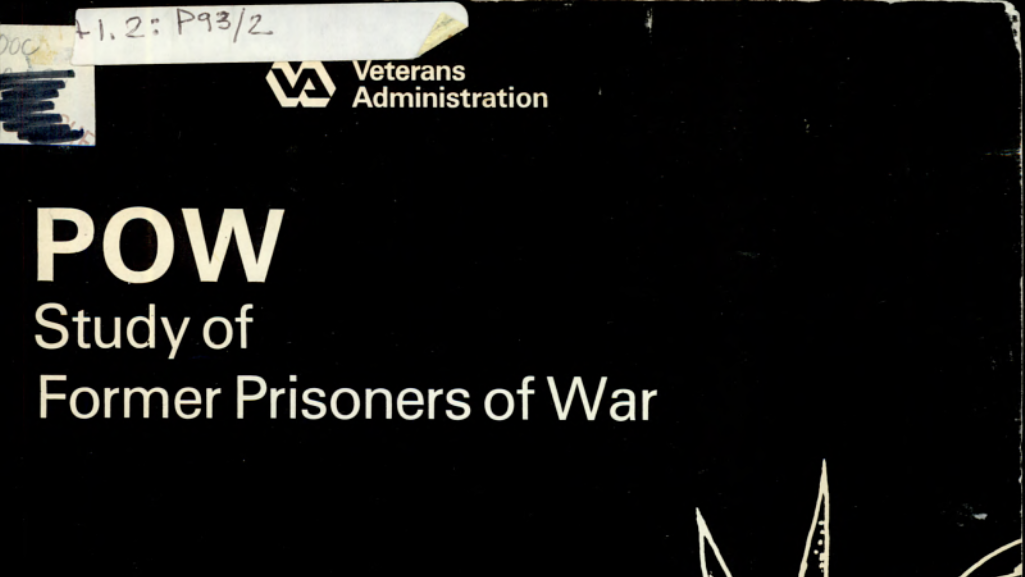
History of VA in 100 Objects
Object 79: VA Study of Former Prisoners of War
American prisoners of war from World War II, Korea, and Vietnam faced starvation, torture, forced labor, and other abuses at the hands of their captors. For those that returned home, their experiences in captivity often had long-lasting impacts on their physical and mental health. Over the decades, the U.S. government sought to address their specific needs through legislation conferring special benefits on former prisoners of war.
In 1978, five years after the United States withdrew the last of its combat troops from South Vietnam, Congress mandated VA carry out a thorough study of the disability and medical needs of former prisoners of war. In consultation with the Secretary of Defense, VA completed the study in 14 months and published its findings in early 1980. Like previous investigations in the 1950s, the study confirmed that former prisoners of war had higher rates of service-connected disabilities.

History of VA in 100 Objects
Object 78: French Cross at Cypress Hills National Cemetery in Brooklyn
In the waning days of World War I, French sailors from three visiting allied warships marched through New York in a Liberty Loan Parade. The timing was unfortunate as the second wave of the influenza pandemic was spreading in the U.S. By January, 25 of French sailors died from the virus.
These men were later buried at the Cypress Hills National Cemetery and later a 12-foot granite cross monument, the French Cross, was dedicated in 1920 on Armistice Day. This event later influenced changes to burial laws that opened up availability of allied service members and U.S. citizens who served in foreign armies in the war against Germany and Austrian empires.


